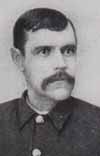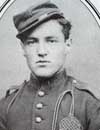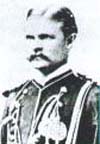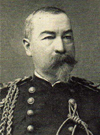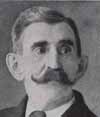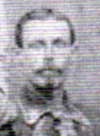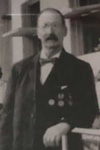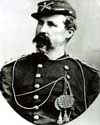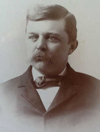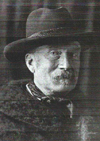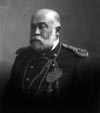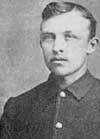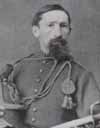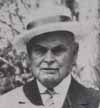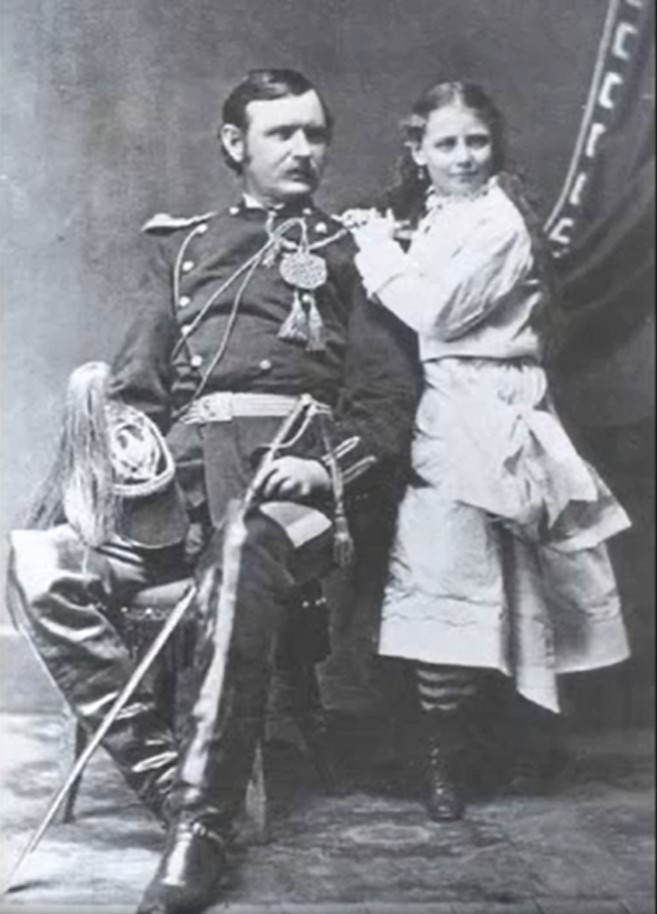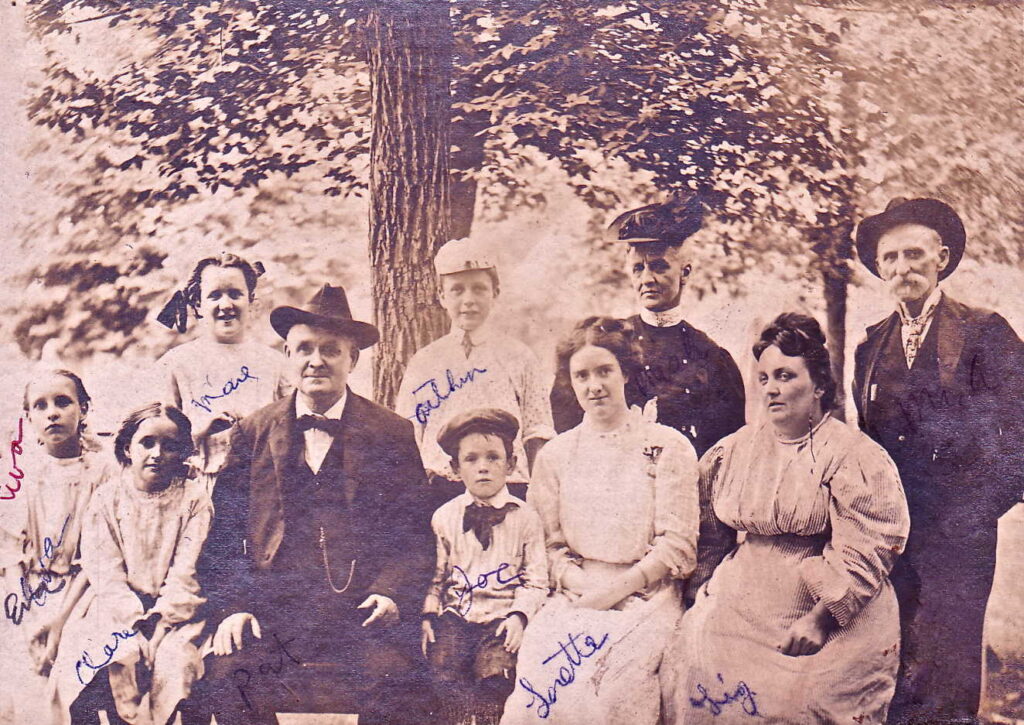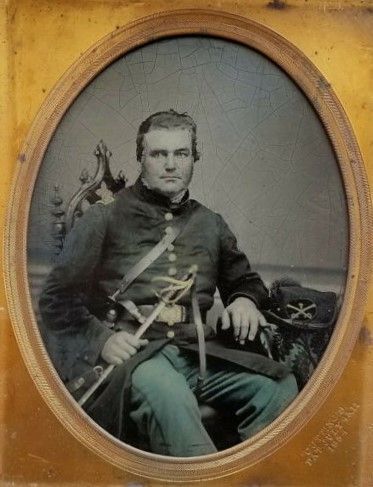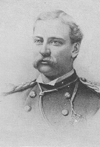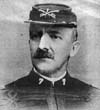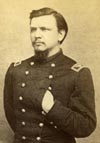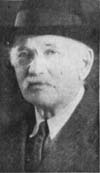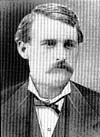Alexander Brown (left) was born on February 19, 1844, in Aberdeen, Scotland. He was a Sergeant in Company G and was with the pack train and in the hilltop fight.
William Othniel Taylor (right) died in Orange, Massachusetts, on February 19, 1923, and was buried in the Central Cemetery there.
Ernest Garlington (left) was born on February 20, 1853, in Newberry, South Carolina. He was a Second Lieutenant assigned to the Seventh Cavalry, but he was not present at the battle because he was on leave after graduation from the United States Military Academy at West Point.
Thomas Hughes, who was also known as Charlie Hughes, was born in County Mayo, Ireland, on February 21, 1845. He was a Private in Company H who was wounded in the hilltop fight.
Charles Ackerman married Ephresina Peterson on February 21, 1881, at Fort Totten. He was a Private in Company K who was not present during the battle due to detached service at the Powder River Depot.
Michael Vincent Sheridan (left) died on February 21, 1918, in Washington, D.C., and was buried in Arlington National Cemetery. He was a Captain in Company L who was not present due to detached service as the aide-de-camp for his brother, General Philip Henry Sheridan. In June 1877, Michael Sheridan was in charge of the detachment that exhumed the remains of the officers from the battlefield.
Dennis Lynch (left) was born on February 22, 1848, in Cumberland, Maryland. He was a Private in Company F who was not at the battle due to detached service guarding Custer’s luggage aboard the steamer Far West.
William Gavin Capes (right) was born in Portland, Maine, on February 22, 1849. He was a Sergeant in Company M who was not present at the battle due to detached service at Powder River, Montana.
John Francis Donohue (left) was born on February 22, 1853, in Tipperary, Ireland. He was a Private in Company K who was with the pack train and in the hilltop fight.
William Millard Caldwell (right) was born on February 22, 1857, in Curwensville, Pennsylvania. He was a Private in Company B who was not present at the battle due to detached service at Powder River, Montana.
Andrew Humes Nave (left) was born in Knoxville, Tennessee, on February 23, 1846. He was a Second Lieutenant in Company I, but he was not present at the battle due to illness.
Jan Mollar, who was also known as James Moller, died on February 23, 1928, in Deadwood, South Dakota, and was buried in the Mount Moriah Cemetery there. He was a Private in Company H who was wounded in the hilltop fight. See also 7th Cavalry Troopers in South Dakota.
George Arthur Rudolph was born in Meuterheim, Germany, on February 24, 1854. He was a Private in the Band who was not present at the battle due to detached service at Powder River, Montana.
Charles Louis Haak died on February 24, 1902, at the Soldiers Home in Washington, D.C., and was buried in its National Cemetery. He was a Private in Company I who was not present at the battle due to illness.
Joseph Greene Tilford (left) died in Washington, D.C., on February 24, 1911, and was buried in Arlington National Cemetery in Arlington, Virginia. He was a Major who was not present at the battle; he was absent with leave in Europe.
John Joseph Hackett died on February 25, 1904, at Fort Sheridan, Illinois, of heart disease and was buried in the cemetery there. He was a Private in Company G who served as an orderly for Lt. George Wallace and was wounded in his left arm while participating in the valley and hilltop fights.
